
芯片(英文)(Chip) 知网目次维普目次
- 国级普刊
- 主管单位:
教育部
- 主办单位:
上海交通大学
- 国际刊号:
2709-4723;EISSN 2730-9401
- 国内刊号:
31-2189/O4
- 学科分类:
- 字数:
-
- 有无基金:
- 周期:
CN外文-季刊
- 特殊属性:
外文期刊
- 电话:
- 邮箱:
- 复合因子:
0
- 综合因子:
0
- 收录:
知网目次,维普目次
- 级别:
国级普刊
期刊简介
《芯片》期刊已被查看: 次
更新频次
单位占比
一作占比
投稿指南
1、投稿方式:在线投稿。
2、官网网址:
https://www.sciencedirect.com/journal/chip
3、投稿系统:
https://www.editorialmanager.com/chip/default.aspx
4、上海交通大学期刊社官网:
http://www.qk.sjtu.edu.cn/jsjtuj
5、出刊日期:季刊,逢季末月出版。
2023年8月23日星期三
《芯片(英文)》(Chip)网站及投稿系统正式上线
【上海交通大学新闻学术网信息】
https://news.sjtu.edu.cn/jdyw/20210317/143433.html
上海交大高起点新刊Chip网站及投稿系统正式上线
2021年03月17日
Chip是由上海交通大学与Elsevier集团合作出版的、聚焦芯片类研究的综合性国际期刊。依托物理与天文学院的学科优势,关注集成电路、微纳光子学、凝聚态物理学、量子物理学、人工智能、数据科学等领域芯片化集成化的科学研究以及它们在工程、医学和社会科学等方面的应用实现,包括但不限于量子计算、人工智能、全光神经网络、类脑计算、物联网和边缘计算芯片以及更多类型的非冯诺依曼计算和后摩尔设备,为共同推动未来信息科学技术的科研人员、高校和企业提供一个理想的平台。
2021年3月12日,期刊Editorial Manager投稿系统及期刊网站均已正式上线。
创刊理念
量子计算、人工智能、类脑计算、物联网以及边缘计算等具有变革性的新一代信息技术,它们或是对信息载体进行前所未有的延伸与拓展、或是对信息处理方法和分布方式进行全方位的创新,不断孕育着一大批尖端的颠覆性信息技术。这些着眼未来二十年内的新型信息处理技术,将在后摩尔定律时代发挥不可估量的重要作用,具有深远的科研价值和社会价值。Chip将关注变革性信息技术芯片相关的基础与应用研究的原创成果,致力于促进信息科学内的多学科协同发展和创新。
宗旨与意义
涵盖变革性信息技术芯片新兴领域,打通学术理论与技术应用的边界,探索前沿交叉学科的无尽潜力,形成芯片类研究的聚集效应!
征稿范围
本刊着眼于变革性信息技术芯片这一新兴综合领域,包括并不限于以下研究领域:
量子信息(利用植根于量子物理学中的量子优势来提高计算性能):量子算法、量子机器学习、量子模拟、量子线路、量子退火;
更多非冯·诺依曼计算和后摩尔设备:光子计算、类脑计算、以及其他极具潜力的经典(非量子)计算技术;
物联网和边缘计算(以创新的方式处理信息):先进传感器、无限信号传输、低功耗计算、能量采集、生物传感;
大数据和人工智能(为集成芯片提供更高效的计算架构):用于数据挖掘的新型硬件和架构、信息检索、机器学习、自然语言处理、计算机视觉、机器人技术;
与芯片相关的跨学科研究领域:新型材料、新型加工制造技术、计算性能和架构设计。
编委队伍
主编由中国科学院院士、上海交通大学党委常委、副校长毛军发担任,上海交通大学教授、集成量子信息技术研究中心主任金贤敏担任执行主编。期刊编委会吸纳了国内外活跃在信息技术芯片研究一线的资深专家和优秀青年学者。
主编简介
毛军发,现任上海交通大学党委常委、副校长,中国科学院院士。主要从事高速电路互连与射频电子封装研究,担任相关领域国家自然基金委创新群体负责人和973首席科学家。发表500多篇学术论文,包括IEEE刊物论文140余篇,获国家优秀教学成果奖2项,申请发明专利20项(已授权10项)。先后荣获长江学者、上海十大科技精英、全国优秀科技工作者等称号,担任中国电子学会会士、微波分会主任委员,IEEE Fellow。
执行主编简介
金贤敏,上海交通大学教授,集成量子信息技术研究中心(IQIT)主任。长期致力于光子芯片的设计和制备、以及量子计算、量子通信和量子存储的芯片化集成化的研究和研发。
期刊网站:https://www.journals.elsevier.com/chip
Editorial Manager投稿系统:https://www.editorialmanager.com/chip/default.aspx
ISSN:2730-9401(Online)
《芯片(英文)》(Chip)投稿指南
【官网信息】
Guide for Authors
Aims and scope
Chip is an international journal that publishes innovative researches in the emerging field of integrated chips that feature the revolutionary information technology. The journal focuses on the rapid development and potential application of new-generation information technologies. These include but are not limited to the following fields:
Quantum information: quantum algorithm, quantum machine learning, analog quantum computing, quantum circuits, quantum annealing
New types of Non-von Neumann computing and post-Moore devices: photonic computing, neuromorphic computing, other promising classical (not quantum) computing technologies
Internet of things and edge computing: advanced sensors, wireless signal transmission, low-power computing, energy harvesting, biomedical systems
Big Data and artificial intelligence: innovative hardware and architecture for data mining, information retrieval, machine learning, natural language processing, computer vision, robotics
Interdisciplinary area related to chip issues: new chip materials, new device manufacturing techniques, algorithm and architecture of chips
Chip will bridge the boundaries between theory and technology, and form the aggregation effect of chip research. It aims to become a competitive top journal with strong international recognition and will serve as a platform for graduate students, professionals, and the engineering industry to jointly boost the cutting-edge information sciences and technologies.
Submission checklist
You can use this list to carry out a final check of your submission before you send it to the journal for review. Please check the relevant section in this Guide for Authors for more details.
Ensure that the following items are present:
One author has been designated as the corresponding author with contact details:
• E-mail address
• Full postal address
All necessary files have been uploaded:
Manuscript:
• Include keywords
• All figures (include relevant captions)
• All tables (including titles, description, footnotes)
• Ensure all figure and table citations in the text match the files provided
• Indicate clearly if color should be used for any figures in print
Graphical Abstracts / Highlights files (where applicable)
Supplemental files (where applicable)
Further considerations
• Manuscript has been 'spell checked' and 'grammar checked'
• All references mentioned in the Reference List are cited in the text, and vice versa
• Permission has been obtained for use of copyrighted material from other sources (including the Internet)
• A competing interests statement is provided, even if the authors have no competing interests to declare
• Journal policies detailed in this guide have been reviewed
• Referee suggestions and contact details provided, based on journal requirements
Ethics in publishing
Please see our information on Ethics in publishing.
Declaration of interest
All authors must disclose any financial and personal relationships with other people or organizations that could inappropriately influence (bias) their work. Examples of potential competing interests include employment, consultancies, stock ownership, honoraria, paid expert testimony, patent applications/registrations, and grants or other funding. Authors must disclose any interests in two places: 1. A summary declaration of interest statement in the title page file (if double anonymized) or the manuscript file (if single anonymized). If there are no interests to declare then please state this: 'Declarations of interest: none'. 2. Detailed disclosures as part of a separate Declaration of Interest form, which forms part of the journal's official records. It is important for potential interests to be declared in both places and that the information matches. More information.
Submission declaration and verification
Submission of an article implies that the work described has not been published previously (except in the form of an abstract, a published lecture or academic thesis, see 'Multiple, redundant or concurrent publication' for more information), that it is not under consideration for publication elsewhere, that its publication is approved by all authors and tacitly or explicitly by the responsible authorities where the work was carried out, and that, if accepted, it will not be published elsewhere in the same form, in English or in any other language, including electronically without the written consent of the copyright-holder. To verify originality, your article may be checked by the originality detection service Crossref Similarity Check.
Preprints
Please note that preprints can be shared anywhere at any time, in line with Elsevier's sharing policy. Sharing your preprints e.g. on a preprint server will not count as prior publication (see 'Multiple, redundant or concurrent publication' for more information).
Use of inclusive language
Inclusive language acknowledges diversity, conveys respect to all people, is sensitive to differences, and promotes equal opportunities. Content should make no assumptions about the beliefs or commitments of any reader; contain nothing which might imply that one individual is superior to another on the grounds of age, gender, race, ethnicity, culture, sexual orientation, disability or health condition; and use inclusive language throughout. Authors should ensure that writing is free from bias, stereotypes, slang, reference to dominant culture and/or cultural assumptions. We advise to seek gender neutrality by using plural nouns ("clinicians, patients/clients") as default/wherever possible to avoid using "he, she," or "he/she." We recommend avoiding the use of descriptors that refer to personal attributes such as age, gender, race, ethnicity, culture, sexual orientation, disability or health condition unless they are relevant and valid. These guidelines are meant as a point of reference to help identify appropriate language but are by no means exhaustive or definitive.
Author contributions
For transparency, we encourage authors to submit an author statement file outlining their individual contributions to the paper using the relevant CRediT roles: Conceptualization; Data curation; Formal analysis; Funding acquisition; Investigation; Methodology; Project administration; Resources; Software; Supervision; Validation; Visualization; Roles/Writing - original draft; Writing - review & editing. Authorship statements should be formatted with the names of authors first and CRediT role(s) following. More details and an example
Authorship
All authors should have made substantial contributions to all of the following: (1) the conception and design of the study, or acquisition of data, or analysis and interpretation of data, (2) drafting the article or revising it critically for important intellectual content, (3) final approval of the version to be submitted.
……
更多详情:
https://www.elsevier.com/journals/chip/2709-4723/guide-for-authors
上一篇:翻译跨学科研究(集刊)下一篇:长江流域经济研究(集刊)
《芯片》同类物理期刊
-
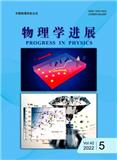
物理学进展(不收版面费审稿费)
北核,武A
CN中文-双月刊影响因子0.368
-
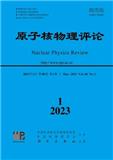
原子核物理评论
北核,科核,CSCD扩,高T3
CN中文-季刊影响因子0.365
-

波谱学杂志
科核,武A-
CN中文-季刊影响因子0.935
-
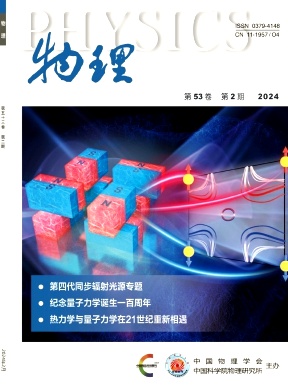
物理
北核,武B+
CN中文-月刊影响因子1.153
-
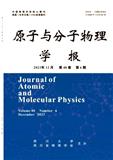
原子与分子物理学报
北核,武B+
CN中文-双月刊影响因子0.667
-
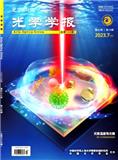
光学学报
北核,CSCD,科核,武A+,高T1,EI(中国2024)
CN中文-半月刊影响因子2.91
-
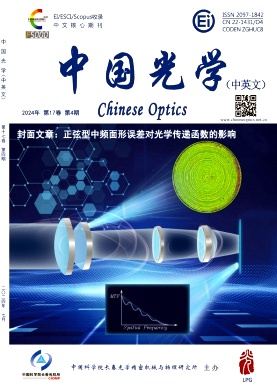
中国光学(中英文)(原:中国光学与应用光学)
北核,CSCD,科核,武A,高T2,EI(中国2024)
CN中文-双月刊影响因子2.336
-
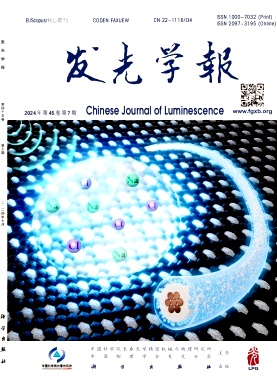
发光学报
北核,CSCD,科核,武A,高T2,高T3,EI(中国2024)
CN中文-月刊影响因子1.356
常见问题
-
芯片杂志社官网、联系方式是什么?
芯片杂志社官网:https://www.sciencedirect.com/journal/chip
投稿网址:https://www.editorialmanager.com/chip/default.aspx -
芯片杂志是核心期刊么?
芯片不是核心期刊,级别是:国级普刊, 是:物理分类下的知网目次,维普目次收录的期刊。
-
请问你们是芯片杂志社吗?
我们不是《芯片》杂志社。本站主要从事期刊信息展示与期刊推荐,不是任何杂志官网,直投稿件请联系杂志社。本站仅提供免费的学术指导、论文辅导、期刊投稿信息整理收集服务。
-
你们指导服务后可以保证文章被发表吗?
期刊发表的成功与否,主要取决于文章内容的质量。编辑老师会根据研究领域、创新性等多因素进行考量。我们会帮助您理解期刊的发表要求,助力提升发表几率,从而增加发表的机会。
-
晋级论文能否在报纸上发表?
在学术界,论文的发表往往被视为研究者职业发展的重要一环。晋级论文,即为了获得更高职称或学术地位而撰写的学术论文,通常需在专业期刊上发表。然而,许多人可能会问
